Culture
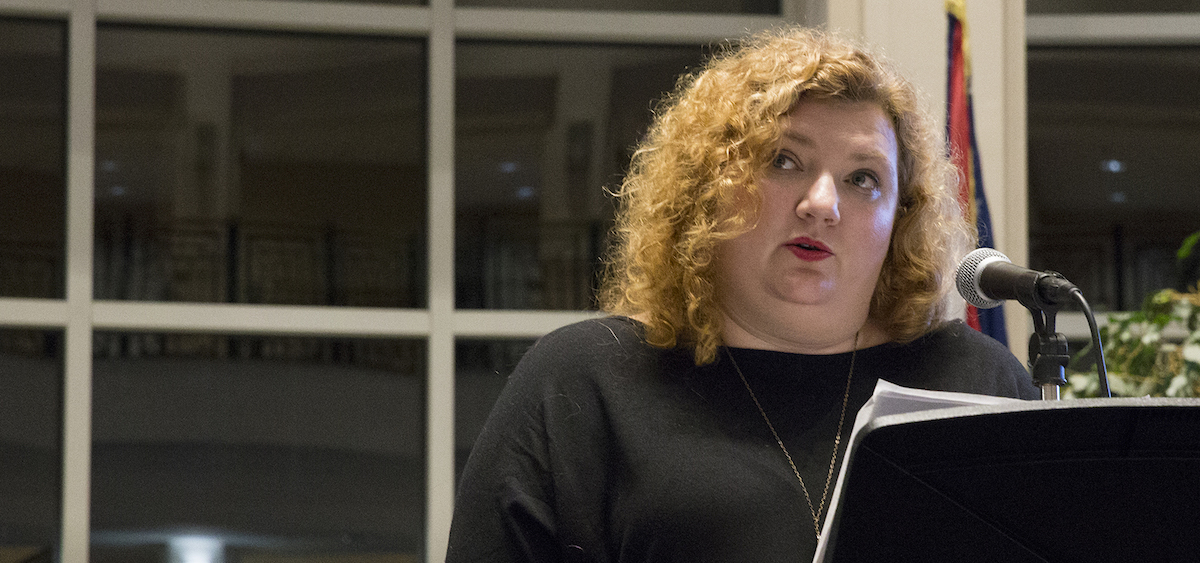
WOAP: Breaking Stereotypes Through Artistic Expression
By: Natalie Colarossi
Posted on:
A giant, textile woven puppet hangs from the corner of Ohio University’s Baker Center art gallery, welcoming guests into a world of vibrant creativity. A further walk into the space reveals a variety mediums; colorful paintings of realistic landscapes and abstract imaginations are framed next to black and white photographs. An intricately made mosaic hangs next to bright, digital designs, while knitted fibers dot the walls. Display cases and shelves hold whimsical paper sculptures, metal-work, stone and glass. The gallery is home to more than 80 works of art, and though each piece is unique and vastly different, they all share something in common: They are made from Appalachian women, and they are part of a project to celebrate their voice.
The Women of Appalachia Project (WOAP) began as a movement to support female artists from Appalachia and to dispel the stereotypes often associated with the region. The project represents both visual and spoken-word artists, and invites women across the Appalachian region yearly to submit their work and have it displayed in galleries or performed live at spoken-word events. It has grown in size and scope over the years, expanding from a mere vision with a handful of artists, to a project that currently represents 66 women across nine Appalachian states.
The WOAP began in 2009 as the result of a dinner conversation that artist and recently named Athens poet laureate Kari Gunter-Seymour had with Winsome Chunnu, Associate Director of the Multicultural Center and Director of the gallery at Ohio University’s Baker Center.
“I turned to her and said ‘Have you ever thought about the fact that Appalachian women in particular are a minority culture? Because when you mention an Appalachian woman people immediately envision a stereotype of no teeth, barefoot, overweight, under-educated, and so on,” said Gunter-Seymour.
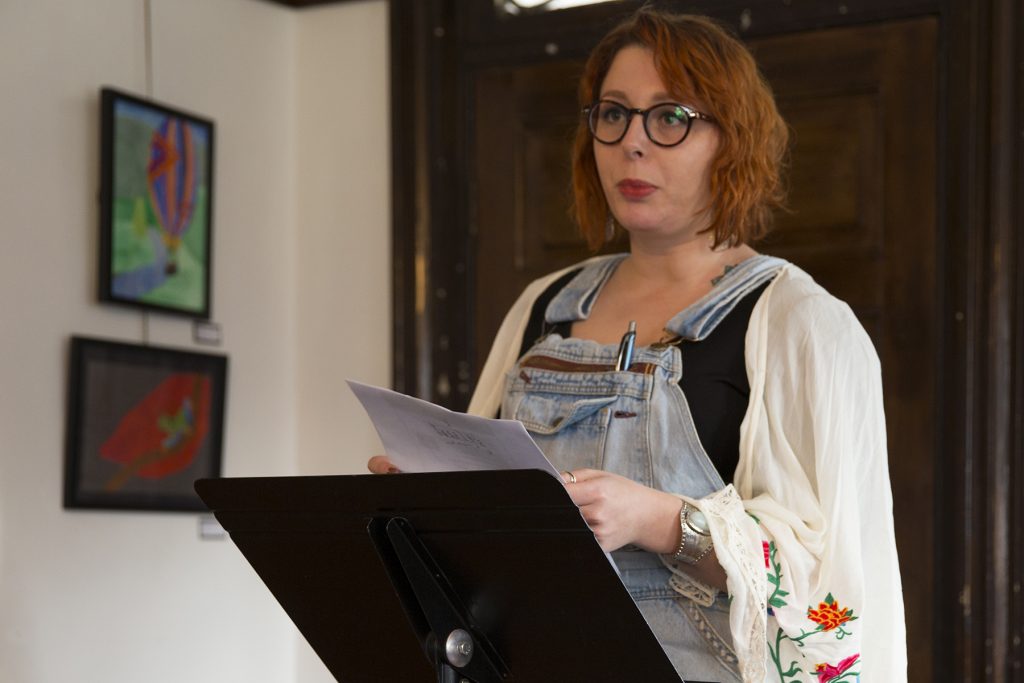
Chunnu agreed and told Gunter-Seymour to put something together for the Multicultural center to review. A few months later, they decided to take on the project.
The WOAP began with just five visual artists and four spoken-word artists, as a way for Gunter-Seymour to address the stereotypes that Appalachian women often face, and to give back to the community.
“I took on the project because when my marriage didn’t work out my three-year-old son and I came out of a holler into the city here,” she said. “I was a basket maker and I realized I had to get myself in school or my son and I were going to live low income our whole lives.”
Gunter-Seymour enrolled at Ohio University and met a community of people who helped lift her up and support her through school. However, through this period she also encountered multiple bouts of discrimination, as people would often mock her southern twang accent, or make snide remarks about her heritage. This gave her the idea to use her Appalachian pride in a positive light, while giving back to the community as best she could.
“I realized that I owe this community; I owe my people this opportunity. That’s where it sprung from- I wanted to give back. I wanted to do some kind of service. And to me, since I was an artist, I thought well ‘OK, I’m an Appalachian so I know about that, and I know a little bit about art and that’s what I can do,’ so that’s how it all kinda started,” said Gunter-Seymour.
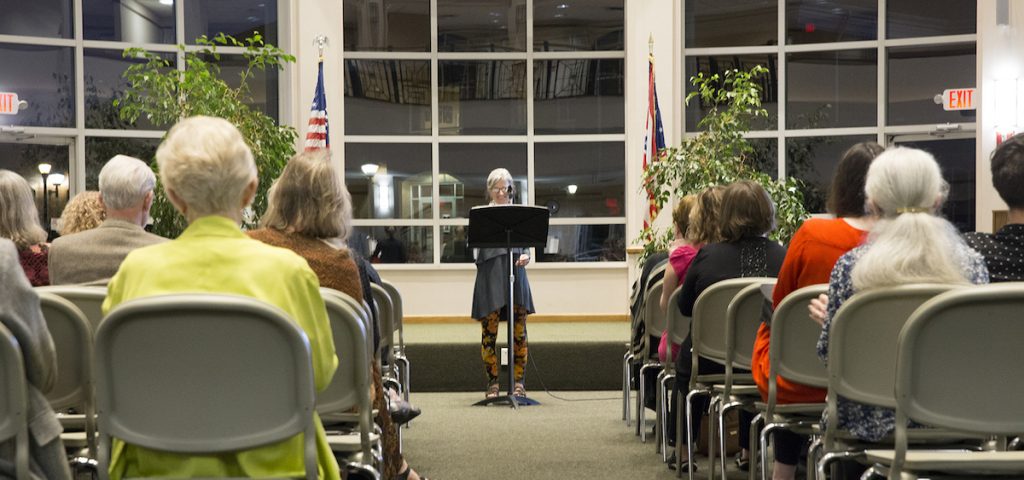
The WOAP has maintained its message throughout the years, calling on female artists while stressing the importance of representing women from the wide and winding Appalachian region, which stretches through the Appalachian Mountains from southern New York to Northern Mississippi. Through social media and word of mouth, the WOAP has expanded itself across the 13-states and now typically receives submissions from well over 100 Appalachian artists each year.
Since the gallery space and spoken-word venues can only accommodate so many artists, the WOAP has developed a jury system in which two jurors (one visual art, one spoken word) come together to review all submissions and choose the ones they think best fit the project. The women chosen then have their art displayed or performed at numerous locations throughout the year, always with the opportunity to sell their work.
“Many of these artists have never shown their work before. How empowering is that if someone buys their piece?” said Gunter-Seymour.
This year, the visual artists of the WOAP had their work shown in four galleries across the region, while the spoken-word artists performed their pieces in five different venues. Each year the artists range in background and age, from 15-72 years old, spanning all the way from Ohio to Georgia.
“I realized that I owe this community; I owe my people this opportunity. That’s where it sprung from- I wanted to give back. I wanted to do some kind of service. And to me, since I was an artist, I thought well ‘OK, I’m an Appalachian so I know about that, and I know a little bit about art and that’s what I can do,’ so that’s how it all kinda started,” – Kari Gunter-Seymour, executive director of the Women of Appalachia Project
Though some of the women in WOAP are practicing artists, they mostly come from a variety of education and art backgrounds; some are teachers, office workers, curators, and students. Some of the artists have never even submitted or showcased their work before, and found a voice for their expression through the WOAP.
“The WOAP is important because it showcases the talent of Appalachian women. It gives us the opportunity to encourage and support each other no matter what age or background,” says WOAP visual artist Emalea Rupe. Rupe’s WOAP creations include two dark-hued oil paintings, which she began by first taking photos of a subject. As a testament to her personal shyness, both paintings feature a subject who is partially hidden. Through this creative representation, Rupe can show the world a part of herself.
Upon submitting a piece, the artists are each asked to write an explanation about the impact of being an Appalachian woman. In the visual art gallery, each piece is accompanied with a little card explaining part of the women’s background and inspiration. Additionally, this allows the jurors and fellow artists to learn more about each other, providing a sort of community for Appalachian women to connect with one another.
“There’s such a sisterhood that has developed throughout this project. I can’t even tell you how many women I’ve gotten close to and kept in touch with over the years,” said Gunter-Seymour.
This is one of the few requirements the WOAP requests. Other than that, the parameters for submitting work require only size restrictions, and allow the women to each submit up to six pieces. This leaves free range for the women to write or make whatever they want.
Sarah Diamond-Burroway of Kentucky, discusses her experience at the spoken word events, and the diversity among WOAP writers. Burroway has found inspiration among different WOAP women performing slam poetry, spoken-word stories, essays, and poetry.
“The best part of sharing that experience is being an audience member and hearing about others experiences” said Diamond-Burroway. “I think that is one of the things that I’ve enjoyed most is to see how open and how broad some of the subject matter is. From something as simple as a memory that one of the writers had of her father coming home from work when she was a child and the sweetest, most honest pure poem that you could image, to very complex stories about body shaming or childbirth, to other very complex physical and spiritual writing.”
The diversity continues among visual artists, as the artists can submit multiple works across different mediums. For instance, this year, Rupe submitted two oil paintings, one photograph, and one ceramic sculpture.
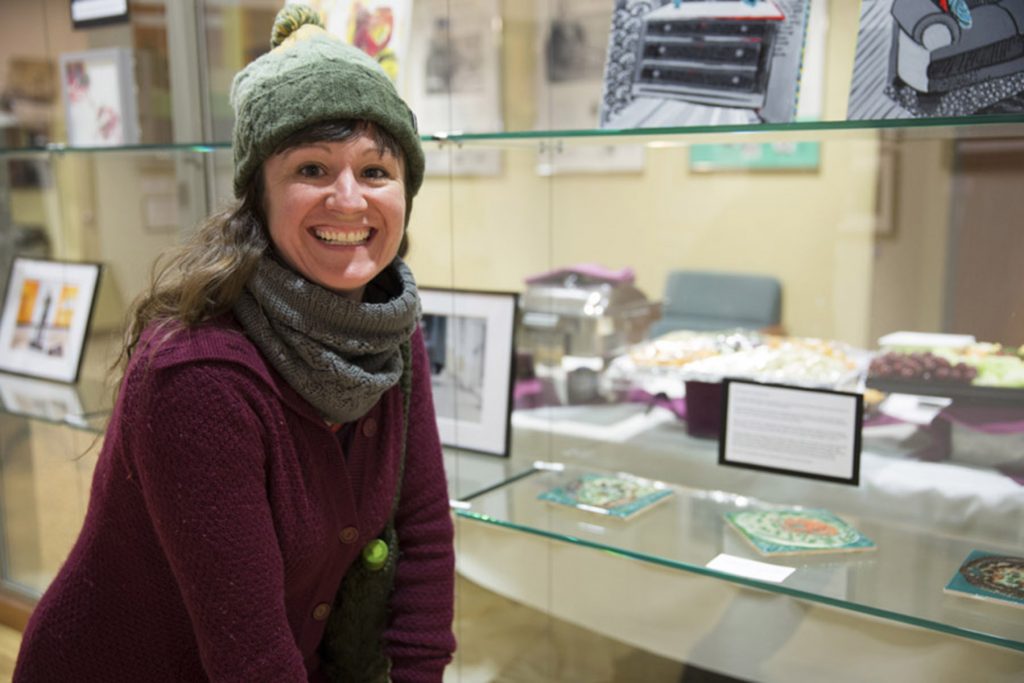
“Being included in the WOAP has been a great experience. I’ve met some really nice women along the way, and it’s exciting taking artwork to different locations” said Rupe.
The visual art exhibit at the Baker Center Multicultural art gallery will end on April 21 with the Women’s Speak Gala, an event that will tie together both the visual art and spoken word aspects of WOAP in one massive celebration. At this event, all 66 women will come together to honor each other and their work over conversation, wine, and performance.
There will also be a Women’s Speak chapbook, a compilation of all the written artists’ pieces for sale at the event, as well as an opportunity for patrons to purchase visual art pieces.
Diamond-Burroway discusses the importance of the event by highlighting that it gives people a chance to be heard. “Everyone has a story to tell, all of us have value, no matter where we’re from, no matter our gender, we just need to take time out to listen and to talk with each other regardless of who we are, and [WOAP] has helped elevate the entire community of Appalachia.”
After the closing ceremony at Baker, the women will pack up their art and move to the next gallery, this time in Chillicothe, OH. This will be the last gallery stop for the 2018 WOAP season, as the new “Call for Art” will be posted May 1, calling on women to submit their work for the 2019 season.
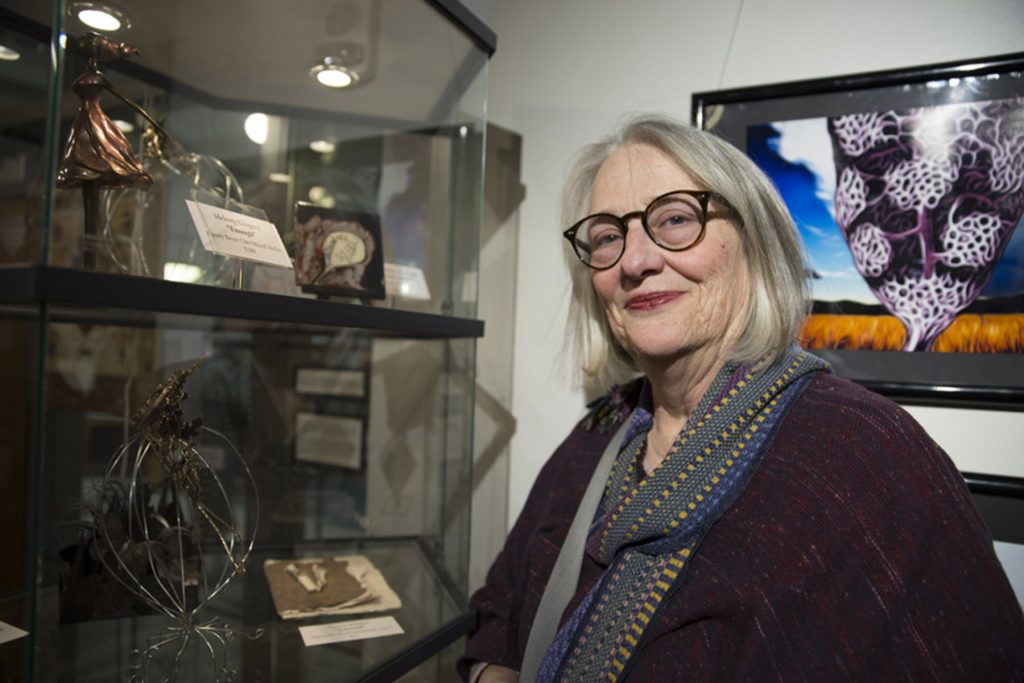
Though the WOAP has already grown vastly since its inception in 2009, the project has ambitious plans for the future. The WOAP is currently working with Ohio University’s Voinovich School to discuss the possibility of getting their artwork and message out to galleries beyond the Appalachian region.
“We feel like this story needs to go to metropolitan areas to really get our message across,” said Gunter-Seymour.
While showcasing Appalachian artists within their own region provides an opportunity for women to have their work supported, it can often be “preaching to the choir” says Gunter-Seymour.
However, a showcase in a New York City gallery, further removed from Appalachia, and where stereotypes may exist in a stronger fashion, would allow these women a chance for widespread representation and recognition.
“You want to shout from the mountaintops and say ‘my goodness look at me! I am not who you think I am.’ But it doesn’t matter, because if you’re shouting, no one is going to listen,” said Gunter-Seymour. “But when you have this mild sort of activism that just says okay, now you can’t look at this art and you can’t hear my poem and deny that I am a very special woman…that’s what I love about it. It’s passive activism and that’s what is going to get us to the top.”

